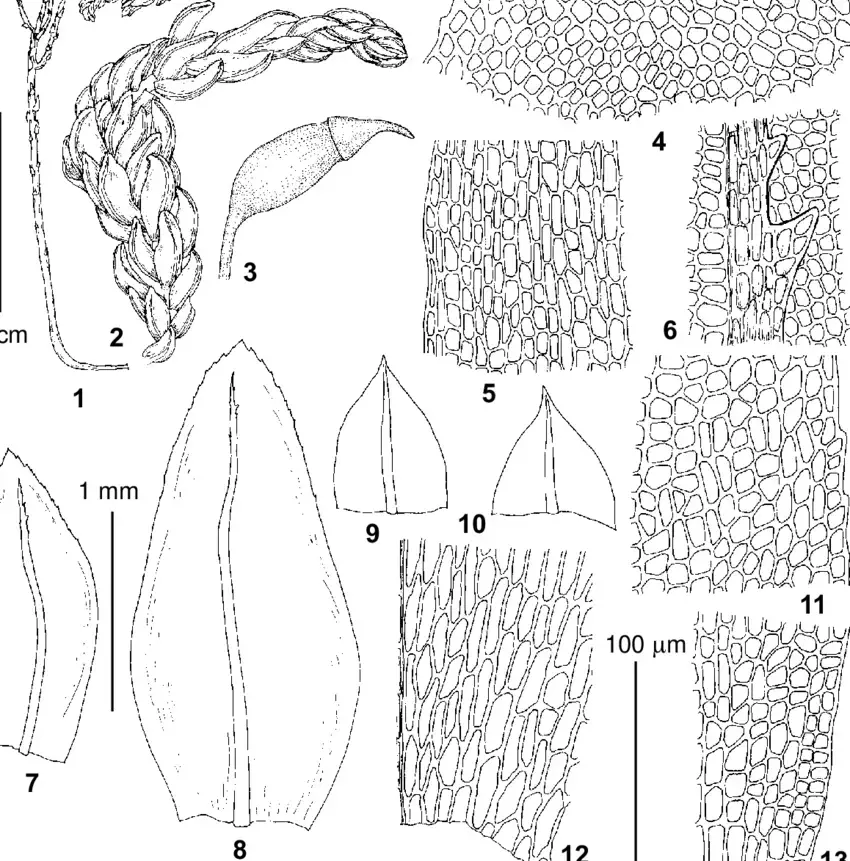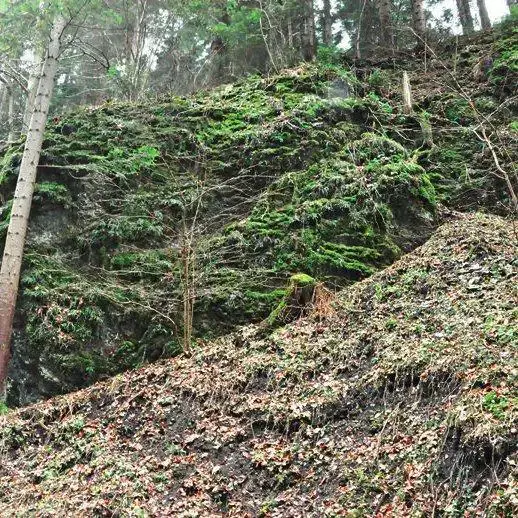
Thamnobryum-neckeroides-from-lectotype-of-Thamnium-vorobjovii-Laz-KW-1-habit-dry.png from: https://www.researchgate.net/figure/Thamnobryum-neckeroides-from-lectotype-of-Thamnium-vorobjovii-Laz-KW-1-habit-dry_fig1_313388189
Introduction
In the vast and captivating world of bryophytes, one particular moss species stands out as a true marvel – the Thamnobryum neckeroides (Hook.) E.Lawton. Belonging to the Neckeraceae family, this unassuming yet fascinating plant has captured the hearts and minds of moss enthusiasts worldwide. Let’s embark on a journey to unravel the secrets of this remarkable organism.
Background
Before delving into the intricacies of Thamnobryum neckeroides, it’s essential to understand the broader context of bryophytes

28847_6002928_5.jpg from: https://artfakta.se/artbestamning/taxon/thamnobryum-neckeroides-6002928
. These non-vascular plants, which include mosses, liverworts, and hornworts, are often overlooked but play a crucial role in various ecosystems. They are among the oldest land plants on Earth, with a rich evolutionary history dating back millions of years.
Main Content
Morphology and Identification
Thamnobryum neckeroides is a pleurocarpous moss, meaning its stems grow horizontally along the substrate. Its vibrant green hue and delicate, feathery appearance make it a true delight to behold. The leaves are ovate-lanceolate in shape, with a distinctive midrib running along their length. One of the key identifying features of this moss is the presence of

Site-of-Thamnobryum-neckeroides-on-shady-limestone-rock-in-the-Bialy-Potok-stream-valley_Q640.jpg from: https://www.researchgate.net/figure/Habit-of-Thamnobryum-neckeroides-in-the-Bialy-Potok-stream-valley-in-the-Pieniny-Photo_fig1_326808166
paraphyllia, which are small, hair-like structures found on the stems.
Global Distribution and Habitat
This moss species is widely distributed across various regions, including Europe, Asia, North America, and parts of South America. It thrives in moist, shaded environments, often found growing on rocks, tree trunks, and soil in forests and woodlands. Thamnobryum neckeroides is particularly fond of calcareous substrates, making it a common sight in areas with limestone or chalk.
Ecological Roles and Adaptations
Despite its diminutive size, Thamnobryum neckeroides plays a vital role in its ecosystem. It acts as a pioneer species, colonizing bare surfaces and facilitating the growth of other plants. Additionally, this moss serves as a microhabitat for numerous invertebrates, providing shelter and food sources.
One of the remarkable adaptations of Thamnobryum neckeroides is its ability to withstand desiccation. During dry periods, the moss can curl up its leaves and enter a state of dormancy, only to revive when moisture returns. This resilience allows it to thrive in environments with fluctuating water availability.

309839.jpg from: https://inpn.mnhn.fr/espece/cd_nom/434511
Case Studies/Examples
In a recent study conducted in the Pacific Northwest region of North America, researchers discovered that Thamnobryum neckeroides played a crucial role in maintaining the moisture levels and nutrient cycling within old-growth forests. The moss’s ability to retain water and slowly release it over time created a unique microclimate that supported a diverse array of other plant and animal species.

Thamnobryum-neckeroides-from-lectotype-of-Thamnium-vorobjovii-Laz-KW-1-habit-dry_Q320.jpg from: https://www.researchgate.net/figure/Thamnobryum-neckeroides-from-lectotype-of-Thamnium-vorobjovii-Laz-KW-1-habit-dry_fig1_274301463

120px-Thamnobryum_neckeroides_(b%2C_144919-481531)_3291.JPG from: https://commons.wikimedia.org/wiki/File:Thamnobryum_neckeroides_(b,_144919-481531)_3291.JPG
Technical Table
| Characteristic | Description |
|---|---|
| Phylum | Bryophyta
Site-of-Thamnobryum-neckeroides-on-shady-limestone-rock-in-the-Bialy-Potok-stream-valley.ppm from: https://www.researchgate.net/figure/Site-of-Thamnobryum-neckeroides-on-shady-limestone-rock-in-the-Bialy-Potok-stream-valley_fig3_326808166 |
Class
 Thamnobryum-latifolium-A-Plant-B-Leaves-C-Leaf-apex-D-Lamina-cells-E-Leaf-base.png from: https://www.researchgate.net/figure/Thamnobryum-latifolium-A-Plant-B-Leaves-C-Leaf-apex-D-Lamina-cells-E-Leaf-base_fig4_346790017 |
Bryopsida |
| Order | Hypnales |
| Family | Neckeraceae |
| Genus | Thamnobryum |
| Species | Thamnobryum neckeroides (Hook.) E.Lawton
 f05_643.jpg from: https://bioone.org/journals/herzogia/volume-29/issue-2/heia.29.2.2016.643/Ergänzungen-Zur-Moosflora-Sachsens/10.13158/heia.29.2.2016.643.full |
Conclusion
Thamnobryum neckeroides is a true testament to the incredible diversity and resilience of the bryophyte world. From its delicate beauty to its vital ecological functions, this moss species continues to captivate and inspire those who take the time to appreciate its wonders. As we conclude our exploration, a thought-provoking question lingers: In a world where larger organisms often steal the spotlight, what other hidden marvels await discovery within the realm of bryophytes?

largepreview.png from: https://www.researchgate.net/publication/326808166_The_Moss_Thamnobryum_neckeroides_Neckeraceae_in_Poland